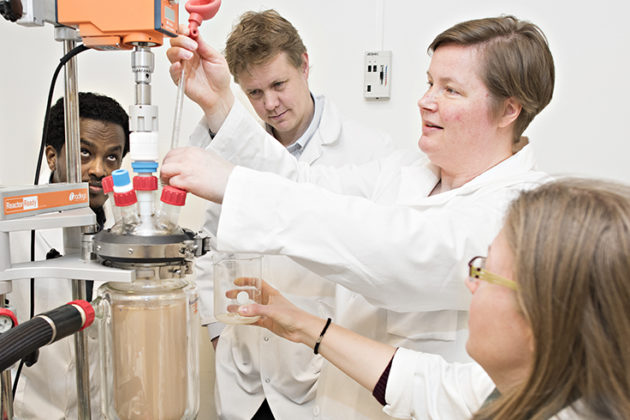Agricultural residues can be a gold mine

Every year there is an excess of 415,000 tons of residual raw materials in Norwegian agriculture. A lot is used for animal feed, but the potential for how vegetable peelings, animal fat and grain residues can be used better is huge.
For the first time the volumes and types of residual materials in Norwegian agriculture have been assessed. On behalf of Nofima and Innovation Norway, researchers at Nofima have recently published a report that provides a good picture of the current status in the industry. Previously, access to residual raw materials in the marine sector has been thoroughly assessed in Norway.
“The goal of the assessment has been to obtain a better overview of the volume, composition, quality, application and new possibilities for the use of residual raw material from Norwegian industrial processing of cereals, meat, vegetable oils, fruit, berries, vegetables and potato,” says Nofima researcher Diana Lindberg, who was responsible for the report.
“This is a very useful report that will stimulate innovation and increased added value from Norwegian biological raw materials,” says Ole Jørgen Marvik, special advisor with Innovation Norway’s section for bio-based industries. “With the new bio-economy scheme that is currently being launched, we’re looking forward to helping develop new refining processes and sustainable products.
Hoping for more innovation
“We welcome the report on residual raw materials in agriculture, and are pleased to have more facts. Now we have to encourage agriculture itself and other industries to use their imaginations and entrepreneurial skills, and to come up with new innovations,” says Minister of Agriculture and Food, Jon Georg Dale.
A company that already has been successful in exploiting what previously was waste in valuable products, is Norilia. By using 150,000 tons of excess products from Nortura, such as skin, natural gut, wool and meat scraps, they now have an annual turnover of NOK 500 million, with a high level of exports. Another company that has made its mark through innovative use of residual raw materials is Norner, which with Innovation Norway’s support is developing biocomposite plastic from potato peelings.
Tons of residual raw material in circulation
From grain production the greatest sources of residual raw material is shell and bran fractions from Norwegian mills, as well as mash from beer brewing. From grain processing and the brewery industry in Norway, 69,800 tons of shell and bran fractions and 17,000 tons of mash are produced annually. In Norwegian meat production the total volume is 264,000 tons, and the vegetable and potato industry produces 64,150 tons of residual raw material annually.
A large and often unappreciated resource is animal fat, which has a combined volume of 27,300 tons. In addition, in order to meet dietary recommendations, the meat producers have started to reduce the amount of fat in their products. This will lead to an increasing volume of fat as a residual material, and a need to take a closer look at other opportunities of exploiting this fat.
“Today most of this fat is used for concentrate feed, and it is desirable to find other uses. The animal fat consists of oils and fat soluble compounds with great variation in fatty acid composition. The fat can be refined to a healthier fat that can be used as an ingredient in foods, for example,” fat researcher John-Erik Haugen with Nofima concludes.
Contact person
Topics
Residual raw material
